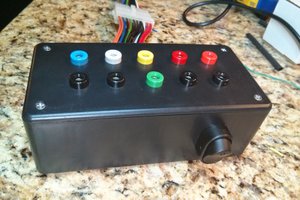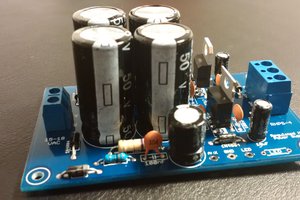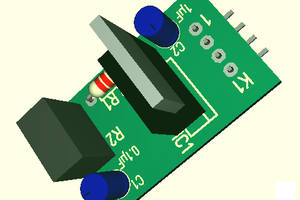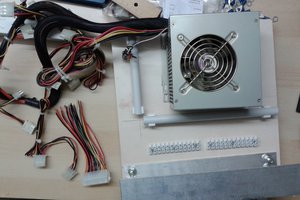When it first stopped working I had no access to schematics. Nor a datasheet for the only IC it used. So I probed around to the best of my ability (limited at that time as I was still learning about electronics) and hoped it wasn't the only component I could not replace that had broken down. Needless to say, I didn't get far and the little power supply sat in a dark corner for a few decades.
But nowadays we have the internet, and suddenly I had access to all the information I needed. Someone on de EEVblog forum had posted a link to de Philips manual (which includes the schematic) and the datasheet for the enigmatic metal can IC could be found.
With these two in hand it still took a little to figure out what was wrong with the power supply as the designers had done some creative things to create the bias supply voltages to make a linear power supply which can go to truly zero volts output. The canonical design for a linear power supply had everything referenced to a common ground rail. This ground rail runs from the rectifier bridge directly to the common output terminal. And the top of the rectifier bridge runs through the pass-through power transistor to the positive terminal. Not so with this design. The power transistor is placed in the zero voltage rail. But in the end this does not change the way it works, just the way one has to think when relating measurements to expected values.
In the end it was apparent that the unobtainable TAA243 IC was the culprit. So does that mean that I should scrap the defunct power supply after all? Well maybe not. IC's from the 70's weren't very complex and, if one could find its datasheet, often documented to the transistor level. As happened to be the case for the TAA243. Looking at the internal schematic it is nothing more than a crude opamp with an extra NPN transistor tagged on. After a bit of experimenting, I came up with a replacement circuit consisting of a 741, two resistors and a BC547. This circuit is not an exact replica of the original TAA243 but close enough to bring the power supply back to life.
Often when restoring old or ancient electronics the first advice is to replace all the electrolytic capacitors. And maybe I should still do this, but even though the main filter caps are driven at their maximum voltage rating, none was showing any wear.

 Brian Wigginton
Brian Wigginton

 euchcat
euchcat
 Christoph
Christoph
Nice work. Be careful of those open trim pots. They are easy to break.